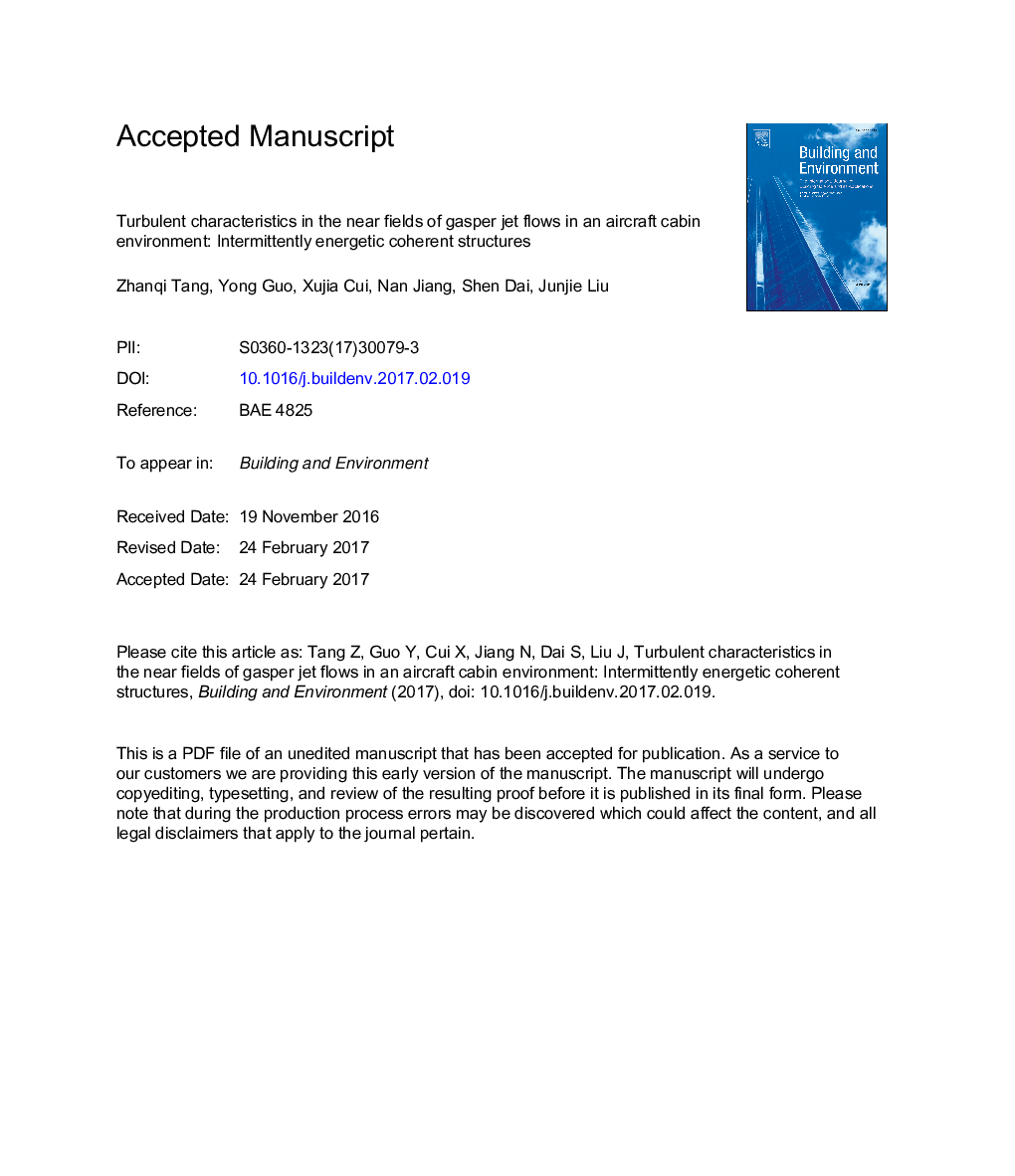| Article ID | Journal | Published Year | Pages | File Type |
|---|---|---|---|---|
| 4917303 | Building and Environment | 2017 | 17 Pages |
Abstract
In an aircraft cabin environment, a gasper nozzle is a type of air conditioning and part of the air-recirculation system, and its near fields are dominated by intermittently energetic coherent structures (IECSs). Based on the percentage of dissatisfied (PD) model, the turbulent intensity and the intermittent frequency of IECSs are investigated in this study as main factors of draught sensation. The gasper jet flow fields at several Reynolds numbers (Re = 2000ï½17,047) are determined using a hot-wire anemometer, and a round-pipe jet flow is used for comparison. The mean velocity and streamwise gradient exhibit self-similarity after the reattachment point. Pre-multiplied energy spectra provide the energetic length scales of the intermittent coherent structures. Then, continuous wavelet transform is employed to detect the IECSs. The average waveform indicates that along the axis direction, the IECSs exhibit unstable coherence, symmetric and oscillating waveforms. All of these signatures are independent of the nozzle geometry and display an earlier emergence with an increase in Re. Furthermore, the mean turbulent intensity and waiting time of the IECSs are explored. Compared with the round-pipe jet, the IECSs in the gasper jet flows have a lower mean turbulent intensity. The analysis of the probability density function indicates that the waiting time between the successive IECSs is almost twice that of the energetic length scale, and the dimensionless result presents that the intermittent frequency has the self-similar distribution for all the cases in this study.
Keywords
Related Topics
Physical Sciences and Engineering
Energy
Renewable Energy, Sustainability and the Environment
Authors
Zhanqi Tang, Yong Guo, Xujia Cui, Nan Jiang, Shen Dai, Junjie Liu,
